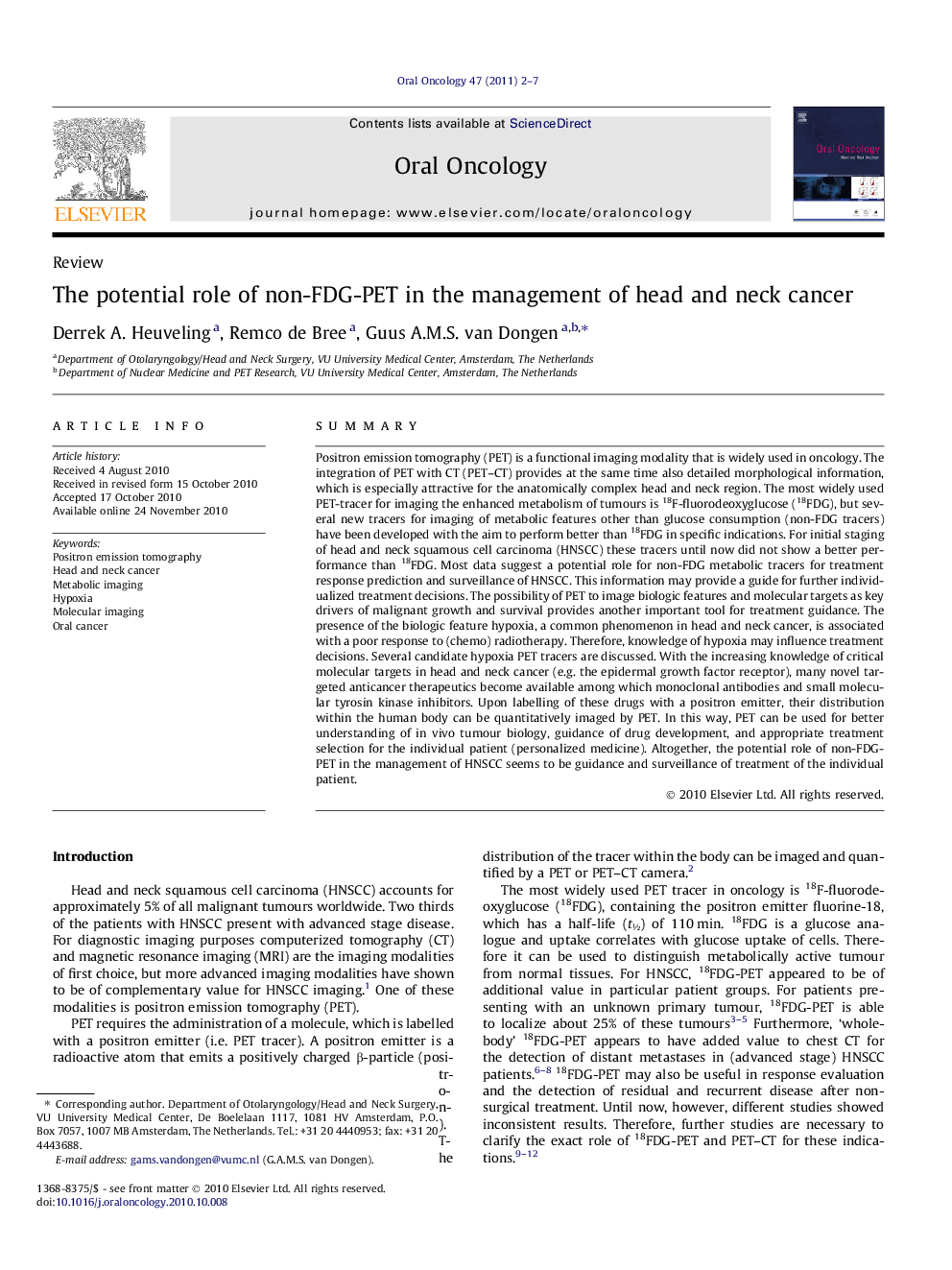| کد مقاله | کد نشریه | سال انتشار | مقاله انگلیسی | نسخه تمام متن |
|---|---|---|---|---|
| 3164764 | 1198809 | 2011 | 6 صفحه PDF | دانلود رایگان |

SummaryPositron emission tomography (PET) is a functional imaging modality that is widely used in oncology. The integration of PET with CT (PET–CT) provides at the same time also detailed morphological information, which is especially attractive for the anatomically complex head and neck region. The most widely used PET-tracer for imaging the enhanced metabolism of tumours is 18F-fluorodeoxyglucose (18FDG), but several new tracers for imaging of metabolic features other than glucose consumption (non-FDG tracers) have been developed with the aim to perform better than 18FDG in specific indications. For initial staging of head and neck squamous cell carcinoma (HNSCC) these tracers until now did not show a better performance than 18FDG. Most data suggest a potential role for non-FDG metabolic tracers for treatment response prediction and surveillance of HNSCC. This information may provide a guide for further individualized treatment decisions. The possibility of PET to image biologic features and molecular targets as key drivers of malignant growth and survival provides another important tool for treatment guidance. The presence of the biologic feature hypoxia, a common phenomenon in head and neck cancer, is associated with a poor response to (chemo) radiotherapy. Therefore, knowledge of hypoxia may influence treatment decisions. Several candidate hypoxia PET tracers are discussed. With the increasing knowledge of critical molecular targets in head and neck cancer (e.g. the epidermal growth factor receptor), many novel targeted anticancer therapeutics become available among which monoclonal antibodies and small molecular tyrosin kinase inhibitors. Upon labelling of these drugs with a positron emitter, their distribution within the human body can be quantitatively imaged by PET. In this way, PET can be used for better understanding of in vivo tumour biology, guidance of drug development, and appropriate treatment selection for the individual patient (personalized medicine). Altogether, the potential role of non-FDG-PET in the management of HNSCC seems to be guidance and surveillance of treatment of the individual patient.
Journal: Oral Oncology - Volume 47, Issue 1, January 2011, Pages 2–7